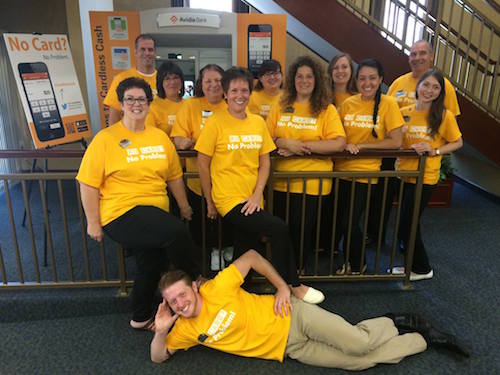Banks and social media case study: Avidia Bank
Can social media really drive adoption of financial products? Yes, states a Massachusetts-based community bank, Avidia Bank. Kate Cwieka, Avidia’s marketing specialist, shares the bank’s experience in embracing social media and the results. Oh, and practical advice on this “non-traditional” marketing channel.
Want to know more on how to apply Hootsuite and Periscope (or find out what they are)? Then read on.
Banking has been on the forefront of digital tool adoption for a long time – it’s safe to say many people were banking online before buying movie tickets via the web. With that said, there are areas in the digital transformation process where financial services are slow, particularly around customer engagement.
As people rely more on social media to receive information and communicate, it’s crucial organisations embrace digital strategies in marketing. Social enables financial organisations to cut through online noise and connect with customers more efficiently and with greater precision.
Now more than ever, industry professionals should recognise how social media offers major benefits to numerous aspects of customer interaction.
We have experienced first-hand the benefits of social media based marketing, particularly when launching a new offering. We were launching Cardless Cash, which allows customers to withdraw money from ATMs directly from their smartphones. Utilising “non-traditional” marketing methods, including new social media platforms and brand ambassadors, we were able to grow and engage with our audience and deliver concrete results.
By scheduling our social outreach through Hootsuite, a platform for managing social media, which – of particular concern for our industry – provides integration with Proofpoint Social Media Protection, we ensured our social media efforts were secure and compliant. At the same time, using Hootsuite helped us keep high levels of customer engagement.
Our digital marketing strategy, carried out from July to September of 2015, resulted in the following:
- a 13% increase in mobile app enrolments;
- doubling our Twitter followers;
- a 10% growth in Facebook followers;
- a 83% positive sentiment for Cardless Cash.
For anyone embarking on a social media programme, here are three strategies to consider implementing during a product release or announcement.
1. Develop new forms of digital content
The idea behind a digital transformation is just that – to go digital. But the transformation shouldn’t end at the product level.
Financial service institutions need to realise customer communications are changing, with people engaging companies through non-traditional, more immediate channels.
For us, the best way to promote services and quickly interact with customers is through the most convenient outlet our customers use; and it’s likely they’re using social media via their phone.
The evolution into a more digital environment can be tricky, but ultimately shows an organisation’s willingness to innovate and meet customers where they feel most comfortable. To make this happen, consider shifting more of your marketing spend towards social media, with smaller amounts going towards traditional marketing methods.
With this in mind, we were one of the first banks to host a live Q&A on Periscope, a platform that lets you broadcast live video to the world. We hosted multiple Periscope streams, at different times of the day and at different locations, engaging relevant finance industry professionals. Our streams showcased the convenience and time differences between ATMs and mobile apps, highlighting ease-of-use and addressing concerns from customers head-on.
It’s crucial to record and capture content like this to repurpose it across other social networks.
Today, content is king, and there are always ways to make large initiatives go further.
2. Leverage an effective social media management tool to publish content and engage your audience
The continuously evolving social media landscape can be difficult to manage.
A recent study from Statista (2016) found that 78% of Americans have a social network profile, a 5% increase compared to last year.
It’s crucial to use social management tools that allow you to monitor key phrases, brand mentions, industry conversations and general news. To keep track of these communication threads and interact with a growing following, our marketing team used Hootsuite to publish social content throughout the entire campaign.
Our social strategy relied heavily on organic social media rather than paid advertisements; we wanted to see exactly how much growth we could garner.
We also used Hootsuite to find social media influencers in the financial services space, and reached out to them directly regarding our campaign. By engaging the right influencers, we were able to boost our Twitter engagement by 101.3% in just three months.
3. Implement an employee advocacy programme
Some of the largest promotional outcomes stem from our employee base.
Avidia Bank has an internal employee advocacy programme called “Avidia Smarties,” where we encourage employees to show brand love and drive overall reach. Programmes like this are great ways to have real personalities respond through social media on behalf of your organisation.
To ensure employees represent your company appropriately, it’s important to have them go through formal training before becoming ambassadors. This was important for our campaign, because as ambassadors, they have access to our Hootsuite dashboard and could pull on-brand content from a central content library. This allowed them to easily share the content on their personal social media channels and help promote the launch.
It’s an exciting time for the finance sector, especially as we establish a strong social media following and experience the long-term benefits.
Over the last few decades, the industry completely changed its playbook to better serve the needs and preferences of customers; people can now make deposits, transfer funds, pay bills and apply for loans online. To keep the momentum going, financial organisations will need to interact with customers directly through social channels and brand ambassadors.
This article is also featured in the July/August 2016 edition of Banking Technology.














































